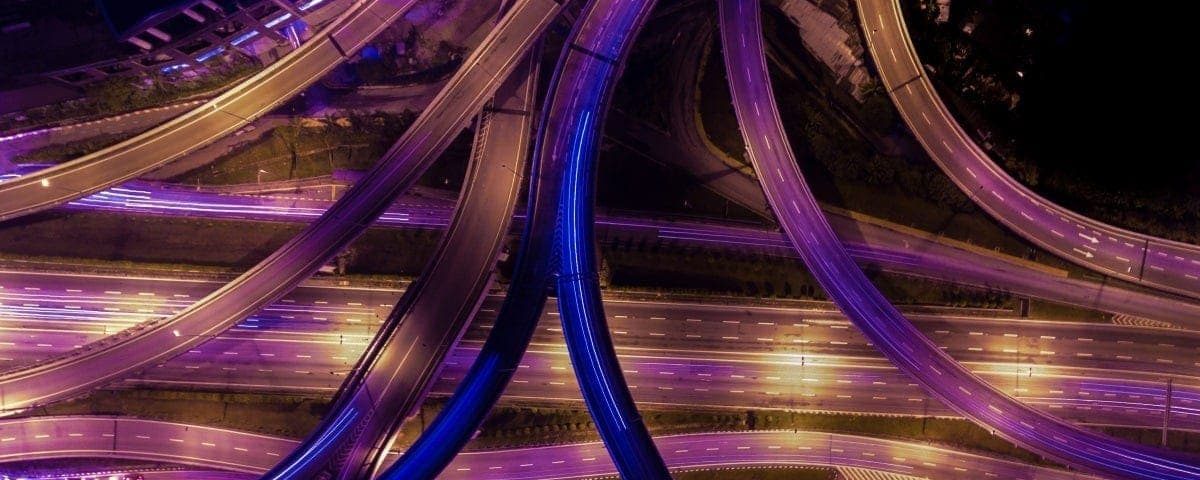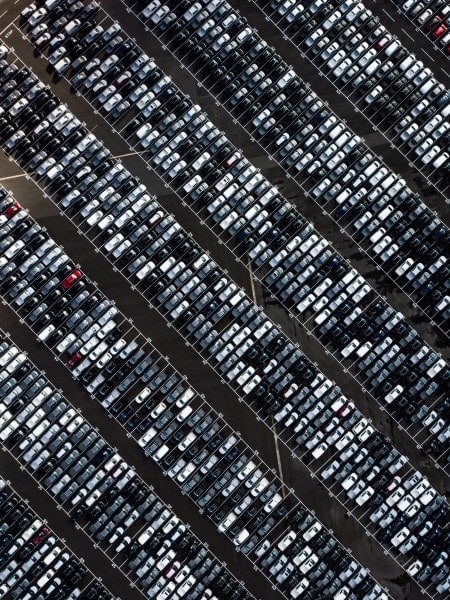
As I see it, adapting infrastructure to climate change and traffic have the same solution: solving mobility. Making gigantic infrastructure works against both of these, and moreover, it doesn’t work.

Source: Unsplash | Author: Ryan Searle
What’s wrong with this photo? There are, in my opinion, three main things: 1) too many cars, 2) too many lanes, and 3) too many emissions; the first two generate an enormous waste of materials in their construction, and the third high levels of pollution.
We often try to solve things by devoting more and more resources to them, and that’s not the solution. The solution lies in thinking differently and doing things in new ways. It must be said that it is often the technology developed over the last few decades that gives us the key to finding new solutions. Such is the case with mobility.
So, how should mobility, and therefore infrastructure, be adapted to climate change? By first solving 3 prior problems:
a) There must be fewer cars, thanks to all the advances in self-driving cars and electric models for renting and carsharing.
Currently, vehicle use times are minimal. We use them about 1 out of every 24 hours, and for the rest of the time they stay parked. Whenever I go down to the garage look around, most of the cars are still there or have only moved around a little bit. I invite you to try this out and think about the amount of natural resources that go into making cars and building and garages, just for them to end up sitting there most of the time. Then there is the paradox that we all want to commute at the same time, creating large traffic jams and, as a result, harming the environment. The above photo would be an extreme example. Surely all of those cars in the photo aren’t going very far, but they are all doing so at once in the most inefficient way possible for mobility.
b) If we were capable of organizing and optimizing vehicle usage, we wouldn’t need so many lanes since the number of vehicles used would be significantly reduced, and they would then travel in the most efficient way. On highways NTE and LBJ (both in Texas, United States), steps have been taken towards smart lanes, where, depending on the real-time traffic conditions, vehicles are distributed in the most suitable way.
In another post, we talked about how the first environmental step is for materials to last longer, and so of course the starting point would be not using resources/materials if avoidable.
c) In terms of energy, keeping in mind Stanford professor Tony Seba’s approaches, as solar energy moves toward zero cost it will be minimal over time. Cars will be electric with zero emissions, and this energy will largely come from renewable sources.
Moreover, there will be another qualitative and quantitative leap. We could say that there will be flying cars, and what we don’t know is what the overlap with or transition from self-driving cars and smart infrastructure will look like. The initial tests of flying drones in China, Japan, and Dubai could give us a good idea.
The transition may not look like that, since this would be a conventional way of thinking. I think that there will be constant evolutionary overlap. In my opinion, all the systems will coexist in the most efficient form. I think that we’ll have hybrid car-drone systems that will use the most suitable infrastructure for the route and traffic conditions at all times. We would be talking about the car-drone hybrid vehicle as we can see in the Airbus video:
Big changes don’t come about by improving how things are done but instead by doing them differently. The environmental impact of solving mobility will not be an improvement. It will reduce wasted materials and emissions by 2, 3, or 4 times over, profoundly benefiting everyone and also significantly improving quality of life for people who will no longer be almost forced to have their own vehicles, along with the savings that carries. Citizens will have more time since the systems will be automated, and they will be able to use that time to do things other than driving. And lastly, the point of this article: pollution will be drastically reduced since everything will be more efficient, and large urban areas will be a better place to live.
There are many benefits to be reaped from improving on something in a successful way, and that feedback allows the solution to evolve faster. In this case, optimizing resources – financial savings for individuals – by there being fewer cars while maintaining mobility levels, increasing time available for people, and improving air quality will definitively drive the mobility solution with improvement for the environment as a result.





There are no comments yet